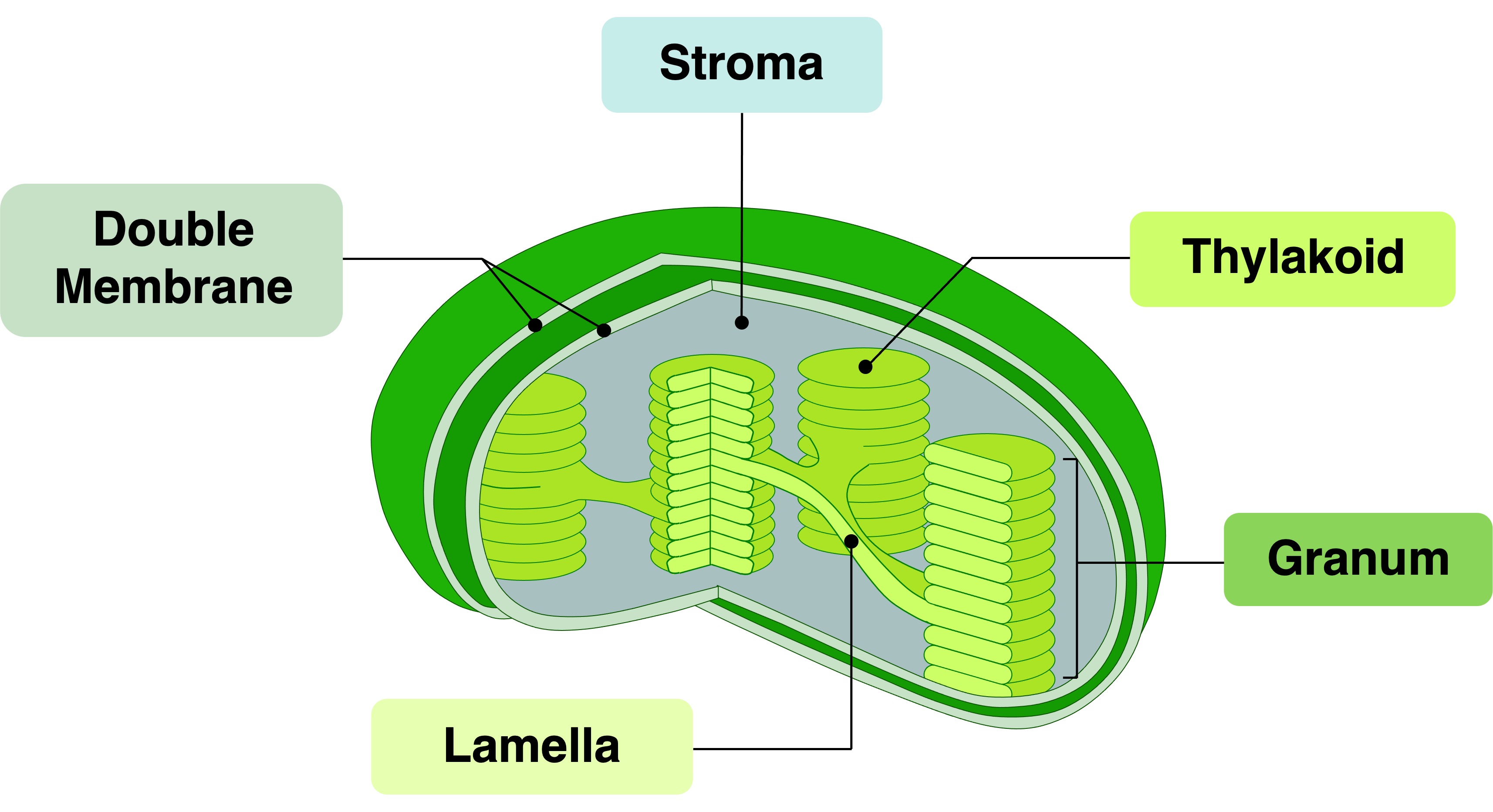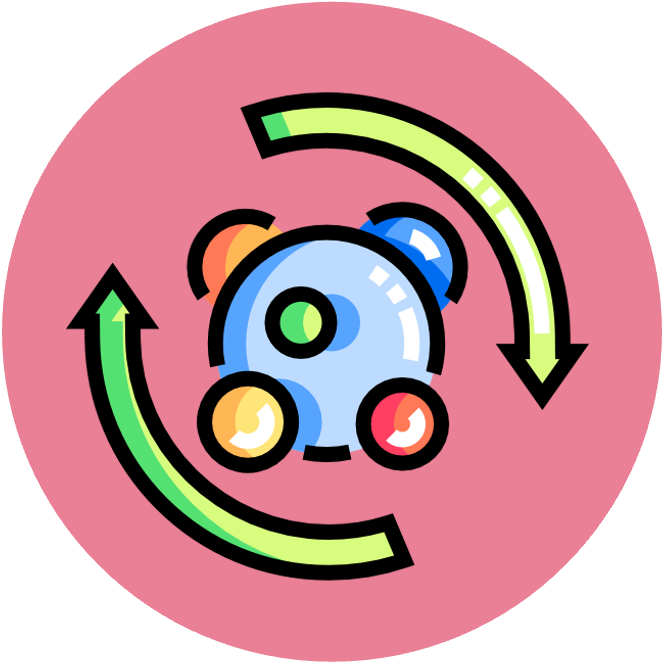

Chloroplast
Chloroplasts are the ’solar energy plants’ of a cell – they convert light energy into chemical energy
-
This chemical energy may be either ATP (light dependent) or organic compounds (light independent)
-
Only photosynthetic tissue possess chloroplasts (it is present in the leaves of plants but not the roots)
Chloroplast are thought to have once been independent prokaryotes that were internalised via endosymbiosis
-
They have a double membrane structure (due to vesicular coating as part of the endocytotic process)
-
They have their own DNA (circular and naked) and ribosomes (70S)
-
Their metabolic processes are susceptible to certain antibiotics
The structure of the chloroplast is adapted to the function it performs:
-
Thylakoids – flattened discs that have a small internal volume to maximise hydrogen gradient upon proton accumulation
-
Grana – thylakoids are arranged into stacks to increase SA:Vol ratio of the thylakoid membrane
-
Photosystems – pigments organised into photosystems in thylakoid membrane to maximise light absorption
-
Stroma – central cavity that contains appropriate enzymes and a suitable pH for the Calvin cycle to occur
-
Lamellae – connects and separates thylakoid stacks (grana), maximising photosynthetic efficiency
Structure of a Chloroplast







